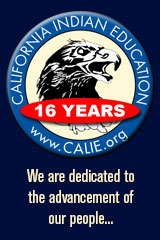 |



| ABOUT TIR, HISTORY & MISSION STATEMENT
MEDIA RESEARCH LIBRARY PUBLISHING CORNER CALIF INDIAN COMMUNITY TIR WEB SITE |
THE PLEDGE OF ALLEGIANCE
On Columbus Day, 1892, The Pledge of Allegiance was first published in "The Youth's Companion" (a popular children's magazine). It was written by a staff member of the magazine, Francis Bellamy, and it started an American tradition steeped in patriotism that continues today.
Several changes over time were made to the American flag pledge.
The U.S. Supreme Court ruled in 1940 — Minersville School District v. Gobitis — that the school district had a strong interest in creating national unity that was sufficient to permit them to compel students to salute the flag. Yet in 1943, the U.S. Supreme Court ruled — West Virginia State Board of Education v. Barnette, 319 U.S. 624 — compelling students to salute the flag violated the First and Fourteenth Amendments. |
CALIF INDIAN NETWORK: AHMIUM.org | SCAIR.org | SDICENTER.org | APAPAS.com | CALIE.org | THEINDIANREPORTER.COM
—
WEB SITE DESIGN
www.theindianreporter.com COPYRIGHT 2009-Present • ALL RIGHTS RESERVED
